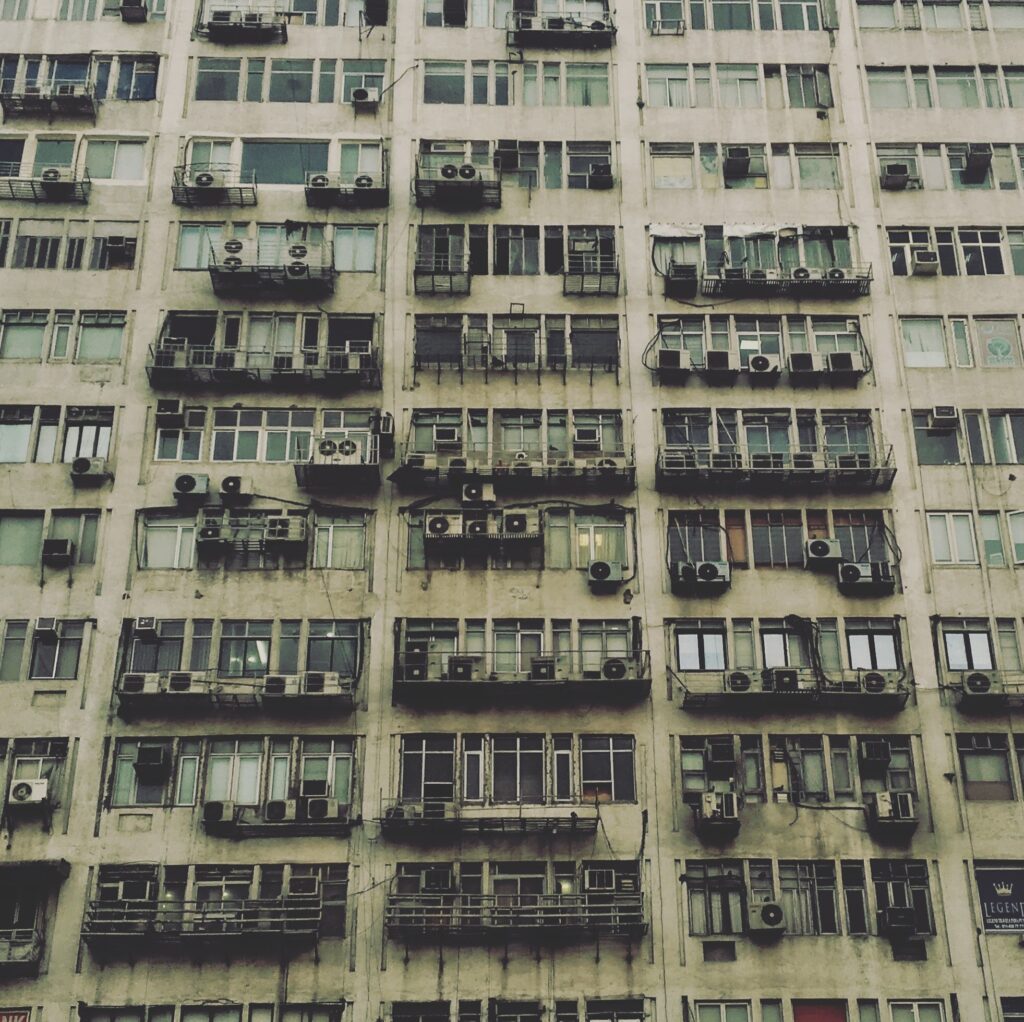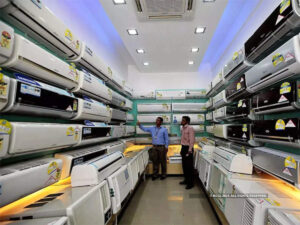India needs better and more diverse solutions to extreme heat. Approximately half the population works outdoors in industries like construction and agriculture exposing them to extreme temperatures. This leads to health risks, productivity losses and even mortality; over 6,100 people have died from heat between 2010-2019 and India loses more than 100 billion labour hours every year. Cooling strategies like air conditioning have been the predominant solution for those who can afford it. However, it requires energy and fuel consumption which leads to high greenhouse gas emissions, threatening mitigation gains leading to a vicious cycle. Innovative cooling solutions that take the most vulnerable into account are crucial for India, to crucially avoid health crises but also to limit loss of labour productivity.

Urban Heat
Heat is experienced differently in cities due to the Urban Heat Island (UHI) effect, which is the tendency of built up areas to retain heat. The temperature difference between a city and its surroundings can be as much as 6 degrees C. Heat waves increase the presence of harmful pollutants and pathogens, causing a host of health impacts including cardiovascular and respiratory issues. The population living in India’s cities, which is set to grow to 590 million by 2030, require urgent and sustainable cooling solutions.
Air conditioning, the most obvious cooling solution, is seriously threatening mitigation efforts. India’s aggregate cooling demand will increase by 8 times in 20 years. The total stock of room ACs in India will cross 1 billion by 2050, a forty-fold growth from 2016. Furthermore, the increased use of electricity and fuel for cooling by those who can afford it, will increase the heat risk of vulnerable groups and strain the electricity grid.
While an air conditioner cools your home, it releases the collected heat outside, worsening the UHI effect, keeping temperatures high all day and all night. The rising cost of energy leads to energy poverty; leaving more people unable to cool their home. This occurred in India in 2022, AC and fan use went up and led to a fuel crisis. The human body usually recovers from daytime heat exposure in the cooler temperatures of the night, so these populations, especially in informal dwellings, are left unable to recover from the heat impacting their long term health. The urban poor are bearing the long term brunt of extreme heat in India.
Addressing Urban Heat
Reducing exposure to avoid the health risks has been the go-to solution, but given current trends this will become impossible. In richer nations, “cooling centres” that provide respite have become common, but they will be of no use to people who have to work outdoors even during the hottest hours of the day. India’s Heat Action Plans (HAPs) suggest changing the schedules of schools and labour work hours, but as cities get hotter, any time spent outdoors will have negative health impacts. Reducing heat exposure and increasing cooling are not enough, but there are a variety of improvements and alternatives that have to be considered in India’s heat planning.
First, solutions and heat assessments have to be context-specific. Currently, information and data on heat and its impacts are largely coming from higher income countries, and so the solutions are not tailored to unique circumstances in the global south. Planning for heat has to be a local endeavour down to the neighbourhood scale. India has a range of HAPs, and though some are innovative, most have blanket recommendations that are ineffective. Of the 37 assessed HAPs, only two had crucial vulnerability assessments, which are vital in order to identify and protect those most at risk. The thresholds required to declare a heat wave were not appropriately differentiated based on local indicators, like the type of land surface or duration of continuous heat people suffer. The capacity to implement solutions is also variable based on locality. Future HAPs should include context-specific guidance for local authorities.
Second, any new housing or construction programs should prioritise emissions reductions and vernacular or low carbon architectural styles. Considering India must construct 700-900 million square miles of commercial and residential space by 2030, prioritising low carbon construction could determine the future need for cooling. Government-led large-scale programs like the Indian Housing For All scheme, for example, should prioritise low carbon constructions. Green building standards and regulations should become part of India’s long term strategy for dealing with heat. South Asia’s traditional architecture has long employed what are now called “passive cooling measures”, like the use of jaalis for natural ventilation, thicker walls of hollow clay bricks that store less heat. Using traditional materials will reduce emissions from concrete and steel construction and from air conditioning buildings. In Auroville, architects are promoting the use of rammed earth in walls and roofs. Simple changes like the orientation of walls and windows, and the use of light-coloured roofs, can make a big difference in the long term.
Third, innovation and reimagining how we use available technology is crucial. Consumer choices can have a big impact on emissions, therefore encouraging eco-friendly technology usage should be prioritised. Ceiling fans are already a staple in Indian households and consume a lot of energy. If ceiling fans with improved energy efficiency ratings are bought and used to replace older models, by 2027-2028, India could achieve energy savings of 10%-15%. The Indian Government’s Department of Science & Technology partnered with global institutions in 2018 to encourage the development of ACs that would have at least five times less climate impact than room ACs in the market today. Making such technologies ubiquitous and accessible will have a significant impact on emissions reductions.
Fourth, behavioural change can have an immediate impact on the health crisis and mitigation efforts. The uptake of heat adaptation measures to avoid health risks has already become crucial in India. These adaptations can be simple and make a big difference: knowing the signs of heat stress and how to respond, wearing cooling fabrics, ensuring government and company dress codes are suitable to higher temperatures, and drinking more water are just a few. Behaviour changes have to be encouraged through public awareness campaigns and increasing access to the correct resources. Studies show that on the global path to net zero, behaviour change can buy time while more sustainable technology is developed. Aside from encouraging innovation, people have to be influenced to use available technology responsibly. As more of India’s population is able to buy and use air conditioning, raising cooling set points for home units, and ‘zonal control’ or using varying temperature settings for different parts of larger buildings, will save energy. The Japanese Cool Biz Campaign successfully reduced carbon emissions from government buildings by raising indoor temperatures and changing employee dress codes, while dramatically increasing public awareness around energy efficiency.
Heat is one of India’s most relevant climate challenges today. Unfortunately, large swathes of the country have already suffered extreme heat and the related losses for many years. India must mitigate the rising emissions from cooling with innovative solutions. Unlike a lot of already fully developed countries, we are still building, and we can build better. Local-level policy planning, energy efficient cooling technologies, and innovation are needed urgently in order to start adapting to new extreme temperatures and to ensure that increasing emissions do not contribute to the vicious cycle of climate change.




